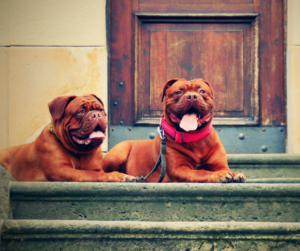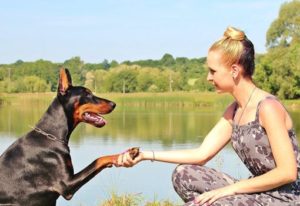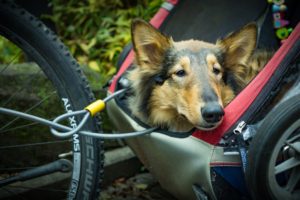Collar pros and cons were mentioned in our previous article, “Harness vs. Collar: What’s Best for Your Dog”. The below article is for pet parents who have decided that a collar is right for them, however, they are unsure if it is appropriate to leave the collar on at all times.
One of the most hotly debated topics among dog lovers is the safety of collars. The disagreement centers on the safety of dogs wearing collars in the home or whenever left without human supervision.
The Arguments For and Against the Collar
To collar or not to collar? Keep reading to hear common arguments from both sides of the issue.
Identification
- Dogs, even those well-trained, get lost: they dart out open doors and gates, dig under or jump over fences. If your dog gets out without a collar and identification tag, the chances of being reunited with him drastically drop.
- However, if your dog is micro-chipped, he can be identified without a collar and ID tag.
- Although, not everyone who finds stray dogs takes them to a shelter or veterinarian with a microchip scanner.
Control
- You can grab a collar to redirect a dog about to jump on a counter, run out a door or go after something he shouldn’t.
- Behavior modification can help eliminate counter surfing and other issues.
Safety
- Normal collars can get caught on furniture, crates and other dogs during play. The buckle release won’t open when the collar is taut and the dog could potentially choke.
- However, the instances of dogs accidentally choking on their collars are far lower than the instances of dogs getting lost.
- Yet, one instance is too much for the owner of a dog it happens to.
- Keeping a sharp, sturdy cutting instrument, like a seat belt cutter, handy lets you remove the collar that’s caught.
How to Decide
It’s up to you to determine if your dog will wear a collar even when he’s inside the home. It’s a personal decision.
The arguments for and against may leave you unsure of what to do, but if you examine your situation and the various options, you can come to an informed decision.
If your dog remains crated while you’re out of the house, remove his collar before you close the gate. Keep it nearby so you can put it back on him before you let him out of the crate. If you’re home with your dog all day, able to keep an eye on him, wearing a collar shouldn’t be a problem.
Use a breakaway or quick-release collar in place of a flat one. If the thought of coming home to find your dog hurt or worse is too much, remove his collar when you leave the house. Just make sure he has some form of identification, and take extra precautions to keep him from getting loose.
No matter your feelings on the this hot topic debate, a healthy dog is every owners’ responsibility. Visit NuVet Plus on Facebook for more pet health topics. You can also see what pet parents have to say about adding NuVet Plus or NuJoint Plus to their pet’s diet.
Follow the NuVet Twitter page!






